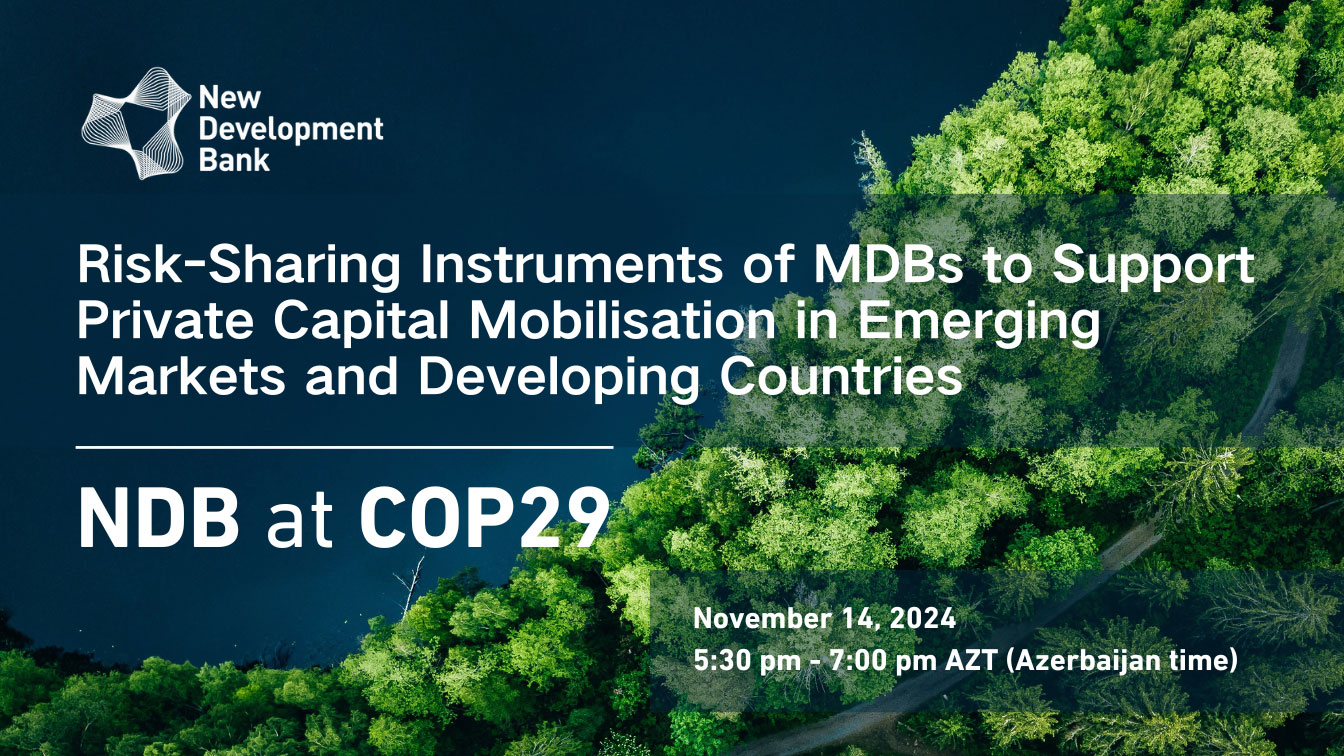Finance, Investment and Trade
Date: November 14, 2024
Time: 5:30 p.m. – 7:00 p.m. AZT (Azerbaijan time)
Location: Joint MDB Pavilion, Blue Zone, Area E, Pavilion I-10
Format: Hybrid
Emerging markets and developing countries (EMDCs) will require anywhere between US$ 3 trillion to 6 trillion per year by 2050 to meet their climate targets (Songwe et al., 2022). Unfortunately, recent studies paint an unpleasant scenario, the climate funding commitments are far too inadequate. EMDCs, whilst grappling with the balancing act of a fair and prudent distribution of their insufficient resources on economic and social developmental needs, they find themselves faced with the challenge of ensuring adaptation of their communities to climate change impacts as well as reducing greenhouse gas (GHG) emissions.
Private capital is amongst various forms of resources expected to assist in the climate action that is required as the countries seek to fulfil their Paris Agreement commitments whilst ensuring survival of their communities. Regrettably, efforts of driving private capital to these countries do not yield expected results. Difficulties have not only been encountered in domestic markets, but international private capital has also been largely absent in EMDC geographies. For example, only 14 percent of the total climate finance in Africa so far has come from private capital (CPI, 2022). The snails-pace flow of private capital towards these markets may be due to unfavourable assumptions by investors who have sighted short-comings such as lack of bankable projects, poor reporting standards and data constraints, high fossil fuel subsidies, currency risks, and uncertainty regarding future climate policies.
Considered as a huge part of the solution, DFIs, particularly MDBs, are uniquely placed to crowd in private capital for climate projects. Beyond their traditional lending, MDBs can reduce, transfer, or mitigate the risks associated with investing in developing countries under certain conditions, thereby mobilizing large volumes of additional private capital that otherwise would not be available.

The objective of this side event is to discuss the wide range of instruments available to crowd in private capital. DFI participants and other think tank organisations will share experiences and lessons on approaches they have adopted in their efforts to catalyse private capital. Deliberations will also focus on instruments used to mitigate the risks associated with EMDCs in relation to crowding in resources from private financiers.
| 17:30 – 17:35 | Welcome and Opening remarks |
| 17:35 – 17:40 | Setting the scene by the Moderator |
| 17:40 – 18:35 | Panel discussion |
| 18:35– 19:00 | Q&A |
Opening remarks:
- Mr. Anil Kishora, Vice-President and Chief Risk Officer, NDB
Moderator:
- Mr. Sean Kidney, CEO, Climate Bonds Initiative (CBI)
Panelists:
- Mr. Mpho Mokwele, Group Executive, Transacting (Infrastructure Deal Execution), Development Bank of Southern Africa (DBSA)
- Mr. Rodrigo Salvado, Director General, Operational Partnership Department, Asian Infrastructure Investment Bank (AIIB)
- Mr. Mohammed Hedi Mejai, Director, Investment Department, Islamic Development Bank (IsDB)
- Ms. Svetlana Radchenko, Chief, Private Sector Department, NDB
- Mr. Thomas Brostrom, Chief Business Development & Investment Officer, ACWA Power